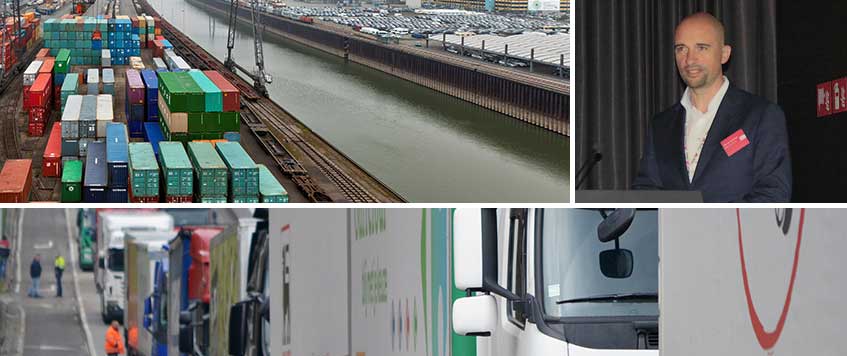16
june
Inland shipping necessary alternative to road transport
Every form of transport has its advantages and disadvantages. Peter Van den Broeck of Conport indicates the possibilities for domestic goods transport during the FVPhouse event in the Havenhuis in Antwerp. "Take the truck for example. Transport by road is quick and easy, although theoretical costs must be added to this manner of transport such as tolls or waiting hours," says Peter during his presentation. "This form also only works smoothly when there are no traffic jams."
“ Some of the pressure on our roads could be avoided if we start transporting a large share of our frozen goods in reefer containers on inland waterways.”
"An alternative can be to transport by rail although this is more limited than by road. You can't go door to door by train, or the company would have to have its own rail connection. Not a common occurrence." Another alternative is inland shipping, although this has necessary road transport according to the speaker. "If there is no own dock on the water next to your company, transport by road will be needed at the start or end of the journey. When the distances are small the traffic jams are less likely to be a problem as those roads are less close to busy ports."
Peter believes it's important for transporters to take off their blinders and look at the alternative methods of transport that can be used reciprocally and to compliment. "There are various methods with which to transport goods. Take combined transport that goes by sea and road. Another possibility is multimodal transport of the product by rail, road and water. In intermodal transport the same methods are used, but with packaged products such as containers. If a port is fitted tri-modally, it means that this port can use the three methods of transport, inland shipping, road and rail. It's the combination of those three that allow flexibility."
Road transport remains an important link, according Peter. "If we look at the intermodal transport, this is also the main expense," he continue. "Around 25 percent of the cost goes to the inland route, 30 percent to storage and 45 percent to pre or after transport. Some of the pressure on our roads could be avoided if we start transporting a large share of our frozen goods in reefer containers on inland waterways. This way we can contribute to the reduction of the number of trucks on our busy roads."
The end goal according to Peter is to convince the shipping lines to allow reefer containers to be used domestically with Pre Trip Inspection (OTI) and free from costs such as rent. "PTI is a required check of reefer containers so that containers can be used for export again immediately. This way we could attain the ideal 'one-way' transport. This solution is sustainable both economically and ecologically for the organisation of (frozen) goods transport within Belgium and surrounding countries such as the Netherlands, Germany, France and Luxembourg.
